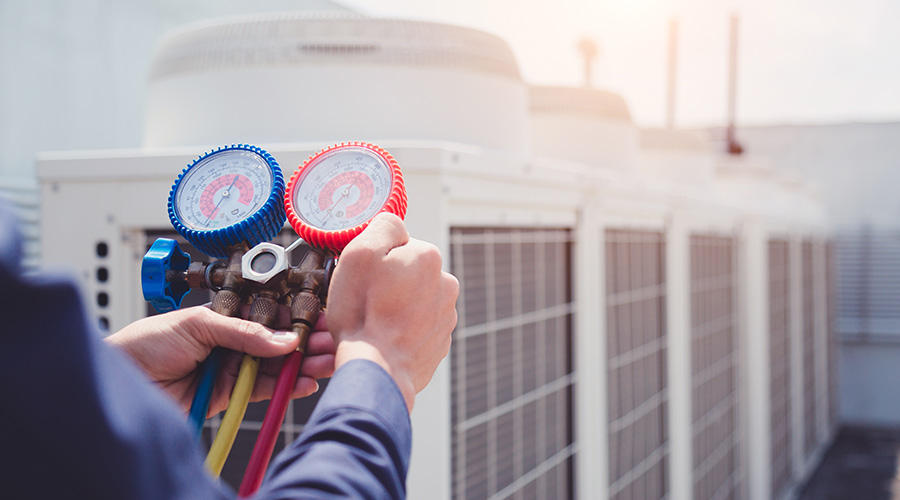Utility Rebate Programs Can Help Fund HVAC Audits, Commissioning
While the audit/commissioning process is crucial for all buildings, its price tag will vary, depending on the size and age of the HVAC system components. In an effort to make these studies more accessible to the average building owner, local utility rebate programs can incentivize energy optimization in commercial buildings, both old and new. In many ways, utility rebate programs can help fund HVAC audits and commissioning.
The two types of utility incentives offered for commercial buildings include service incentives and cash incentives. With the service incentive, the utility company pays an engineering firm or other service provider directly for their technical services, such as retrocommissioning or energy assessment. The incentives range anywhere from 100 percent of services in cities like Chicago to 50 percent of services in others like New York.
In the case of the cash incentive, the utility provides the commercial building owner with a check based on the size or energy impact of the installation of energy efficient equipment.
Obtaining a utility incentive means working with the utility company or their corporate liaison hired to administer the program, or working directly with an industry professional, such as a consulting engineer, contractor or energy efficiency firm that is an approved provider with the sponsor utility.
Incentive programs, like the ComEd Smart Ideas retrocommissioning program in Chicago, have made a sizeable impact throughout its area in commercial office buildings, both those with prior sustainable certification and those without.
One example is the Hyatt Center in Chicago. Built in 2005, the 49-story Hyatt Center is one of Chicago's newest landmarks. Energy Star labeled since 2008, the building received LEED-EBOM Platinum certification in 2010. As a new building, the Hyatt has new equipment throughout, including a robust, fully digital DDC control system. Rewriting programming logic in the system and making technical adjustments to the building's set points based on outdoor temperature feedback and sensors, as well as altering new building load requirements resulted in an identified, measured, and verified 1,613,526 kWh of annual electricity savings.
The combined implementation cost of all measures was about $26,000, which included a controls contractor and in-house labor costs and resulted in a simple project payback of just four months. Retrocommissioning services were paid for in full by the ComEd program.
Let's take another example. Built in 1987, McDonald's 750,000-square-foot central office building had its mechanical systems retrocommissioned by the ComEd program in conjunction with a LEED-EB Platinum certification in 2008. This process led to adjusted operating schedules, repairs to a chilled water bypass valve and recalibration of return air temperature sensors that were reading 7 degrees (F) high, resulting in inefficient economizer operation. Capital improvements included the addition of a lighting control system and a BAS upgrade that included energy saving functions. Optimization strategies included reducing building pressure problems related to the kitchen environment. Overall, the project resulted in an 18 percent reduction in natural gas consumption and a 6 percent reduction in electricity use.
Building HVAC systems have increased in complexity — a trend that is likely to continue. A building will never improve by itself, nor is it likely to stay the same. Instead, an energy audit and regular commissioning are needed to bring HVAC systems back to their optimal state.
David P. Callan, P.E., CEM, LEED AP, senior vice president, oversees the management of the technical staff in the design of high-performance projects at Environmental Systems Design. Reach him at DCallan@esdglobal.com.
Kyle Hendricks, LEED AP O+M, is a project manager at Environmental Systems Design.
Prove It! Stats on Commissioning
- The median whole-building energy savings from commissioning is 16 percent in existing buildings and 13 percent in new buildings.
- The median payback time is 1.1 years in existing buildings and 4.2 years in new buildings.
- Projects with a comprehensive approach to commissioning attained nearly twice the overall median level of savings, and five times the savings of projects with a constrained approach.
Source: "Building Commissioning: A Golden Opportunity for Reducing Energy Costs and Greenhouse Gas Emissions" by Evan Mills, Lawrence Berkeley National Laboratory, 7/21/2009. (http://cx.lbl.gov/2009-assessment.html) |
Related Topics:













